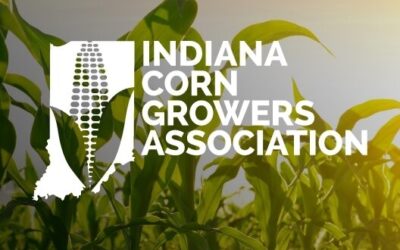Investments in Panama help build markets for Indiana soybean and corn growers
By Amie Simpson
Farmer leaders with Indiana Soybean Alliance and Indiana Corn Marketing Council participated in a regional project visit Dec. 16-19 in Panama City, Panama. The goal of the trip was to continue building strong relationships with stakeholders in these countries and see how checkoff investments and partnerships help boost markets in areas like Central America.
ISA Board Member Brian Warpup, a farmer from Warren, Ind., says it’s important to see firsthand how the checkoff is making an impact for the state’s soybean and corn growers.
“I wish every farmer could travel to see what it takes to build these markets and how many relationships are made and have been made in past decades to sell a soybean today from Indiana,” he said. “I always say it’s about relationships. It’s about finding the right people and putting them in the right spot for the right opportunity to be able to export more soybeans to make Indiana farmers more profitable due to a higher demand for our product.”
Partnering with USMEF and USAPEEC in Central America
ISA and ICMC work with organizations like the U.S. Meat Export Federation to accelerate demand for soybeans and corn in all forms. Lucia Ruano, USMEF’s regional representative for Central America and the Dominican Republic, provided the group an update about a mobile grill education program that is supported by ISA and ICMC.
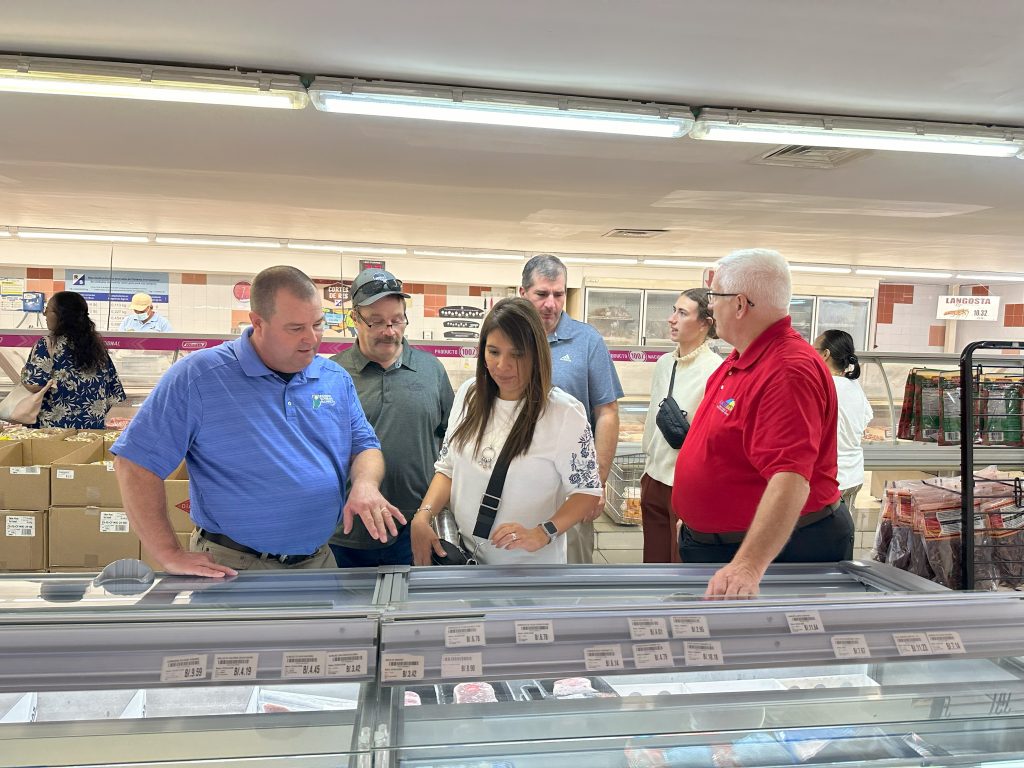
USMEF’s Mobile Kitchen and Grill Academy provides educational activities for importers and their customers. Through workshops in regions of Central America, including Panama, they learn grilling and cooking techniques for high-quality cuts of U.S. pork.
“It is only through the support of organizations like Indiana Soybean Alliance and Indiana Corn Marketing Council that we are able to develop these programs and take them to each country in Central America,” she said. “One of our main goals is to teach people how to prepare the meat because the protein is raised differently in these countries compared to the United States and should be prepared differently. It’s important for them to learn how to cook U.S. pork and beef in a way that allows them to perceive the characteristics and quality of the meat.”
Farmers attending were able to see the differences in grassfed Panamanian beef and grain-fed U.S. red meat while touring supermarkets in the country. They visited San Felipe Neri, a traditional market; Riba Smith Supermarket; Pretelt Marbella Restaurant and Butcher Shop; and Gourmeats, a high-end store specializing in meats.
While visiting Gourmeats, ISA Board Member and LaGrange farmer Carey McKibben said, “They have prime U.S. beef and a lot of choice meat for sale. In all the Latin American countries I’ve been to, this is one of the nicest stores and the variety of cuts available is phenomenal. This store only features U.S. meat. The quality and consistency of our product is why they’re able to do that and the consumers here know that and are willing to pay for it too.”
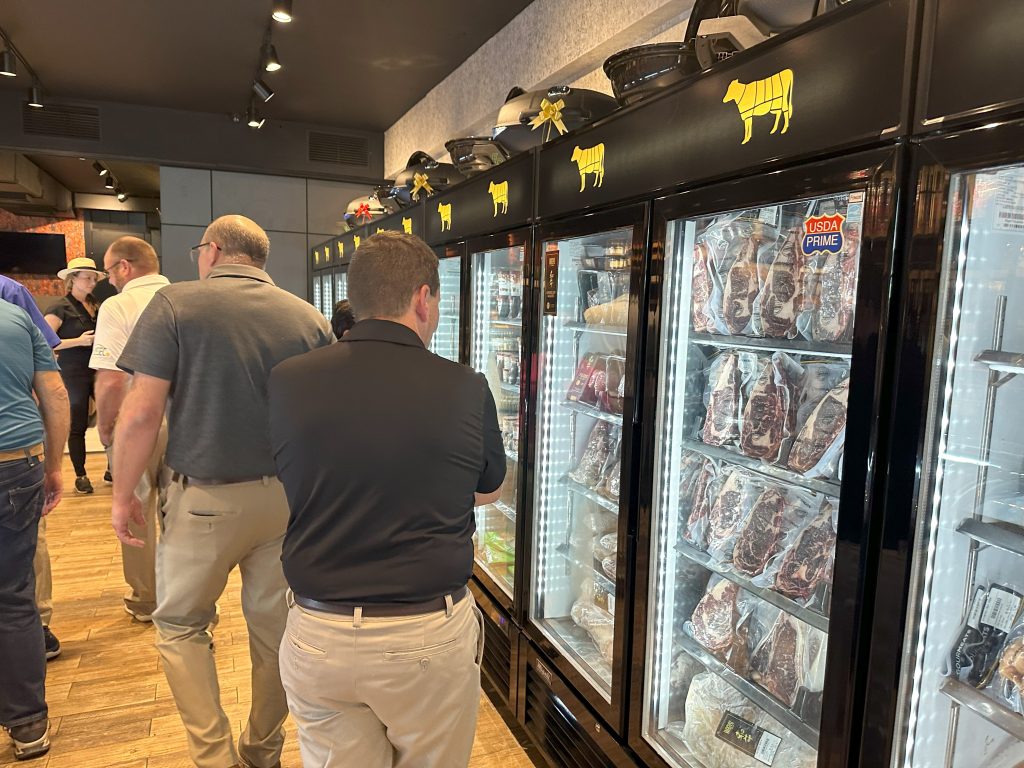
The organizations work with USMEF to develop and grow markets for U.S. red meat. Indiana corn and soybean growers raise the crop used to feed livestock and benefit from increased usage and demand for U.S. pork and beef.
“Our beef, pork, chicken— all of our animals eat Indiana corn and soybeans. It’s a way to export value-added products from the U.S. to these markets,” McKibben says.
Warpup adds, “a lot of our soybean meal goes to livestock feed. If we can get that soybean through an animal and then sell that animal as a finished meat product into another country, it can move more bushels than it would by just selling a barge full of soybeans.”
Indiana Soybean Alliance and Indiana Corn Marketing Council also support programs through the USA Poultry and Egg Export Council (USAPEEC).
Alejandro Diaz, USAPEEC’s country manager of Colombia, discussed efforts to promote U.S. turkey and duck in Mexico as well as U.S. poultry and egg exports in Colombia. These programs include providing duck seminars, training for foodservice, as well as a turkey campaign geared toward consumers.
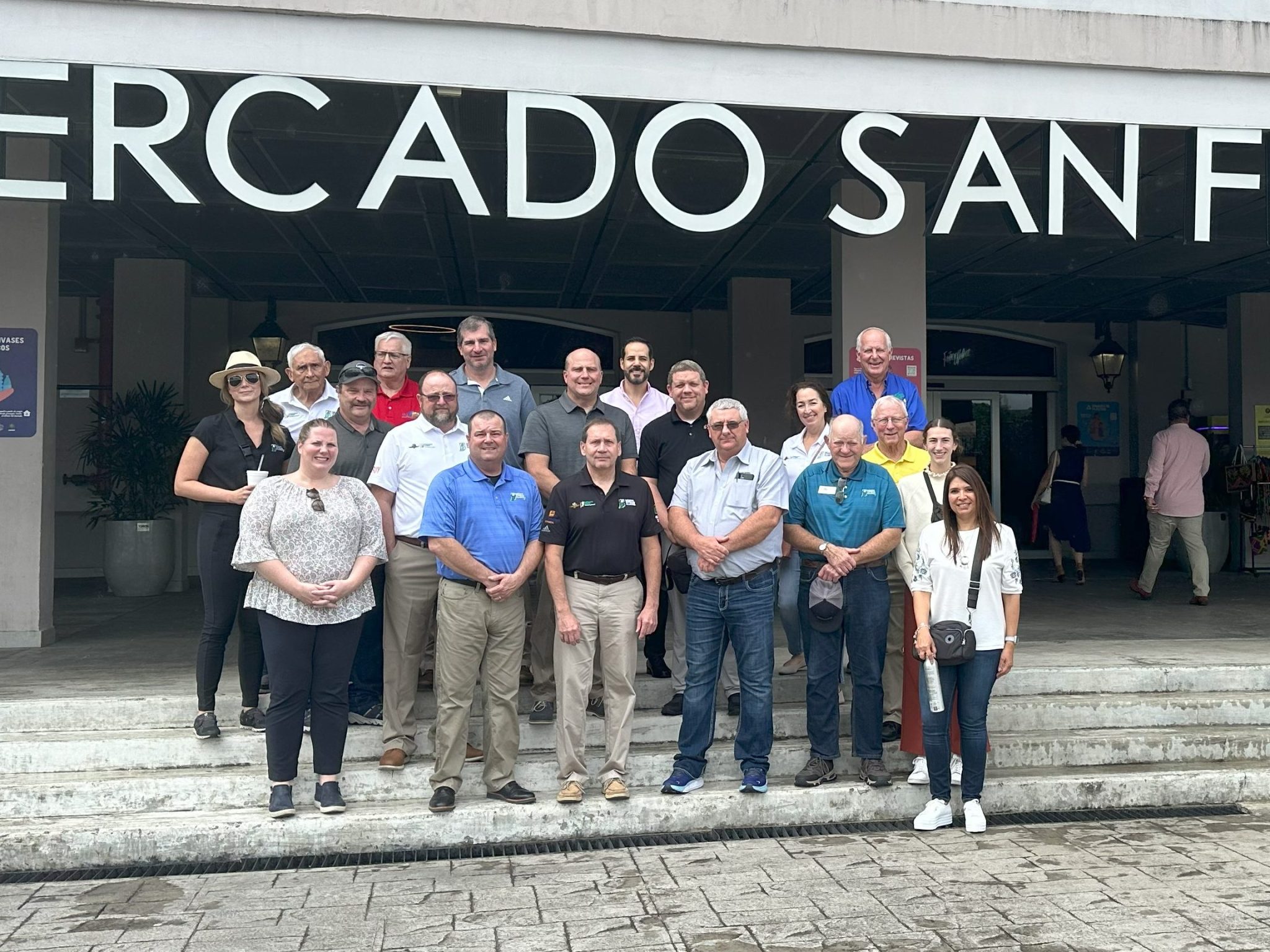
“It’s important for Indiana farmers to visit and see what is happening in these markets. It helps them gain a better understanding of building and maintaining relationships with other producers, distributors, retailers, and the final consumer,” he says.
Keevin Lemenager is an ISA board member and a farmer from Monrovia, Ind.
“The regional project visit was wonderful. Meeting with USAPEEC and seeing all we’ve accomplished in Central America as far as creating demand has been invaluable,” he said. “Indiana row crop farmers benefit from these efforts.”
Farmers visit Panama Canal
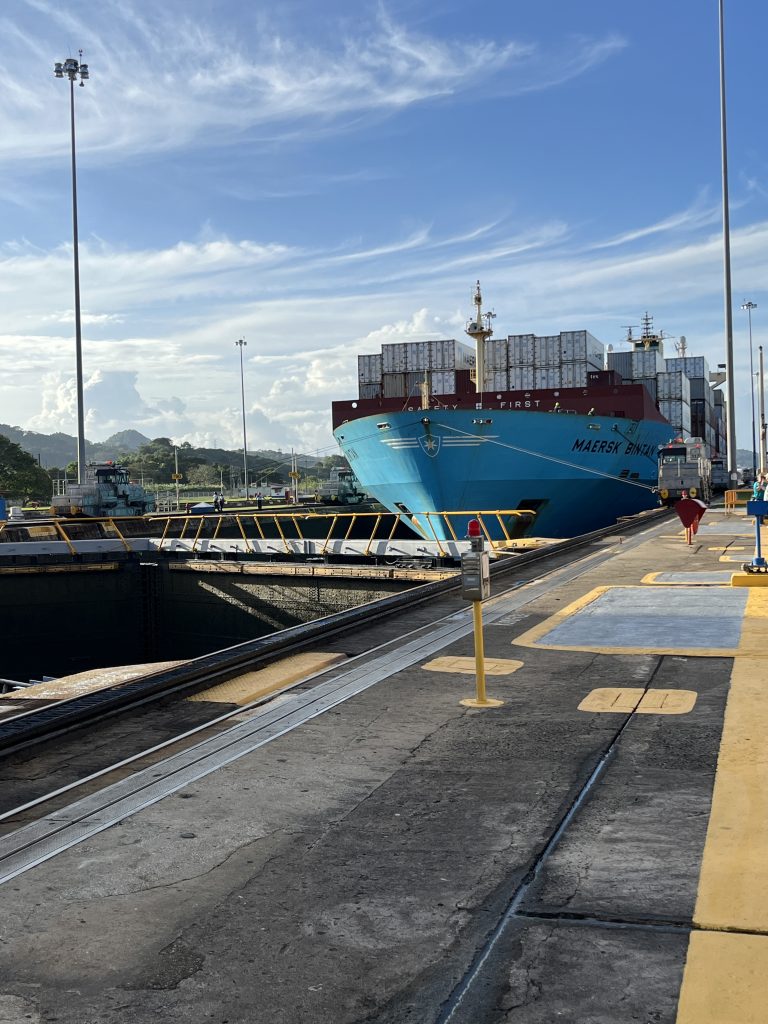
The group visited the Panama Canal and heard an update about how low water levels have led to a slowdown in the number of ships allowed through each day.
The freshwater lake that services the locks in the canal is 81 feet above sea level, which is 6 feet lower than normal due to drought conditions.
In normal conditions, about 40 vessels would travel down the canal each day. Twenty-two vessels are currently traveling through the canal daily. That number will increase to 24 in January, according to Soy Transportation Coalition Executive Director Mike Steenhoek.
ISA Member Mike Koehne, who serves on the Soy Transportation Coalition, says it’s important for farmers to see and hear about the issues impacting transportation.
“I had the opportunity to take a boat ride through the Panama Canal and got to see firsthand how the locks work. I heard about how the low water levels are causing delays and ships are waiting 18-22 days to move through the canal. That affects us farmers as far as our products being delivered in a timely manner to the end user,” he said. “Containers are usually the number one commodity moving through the Panama Canal and bulk agricultural commodities are second. So, there are quite a few ships with grain that travel through the canal.”

The Soy Transportation Coalition had its annual board meeting in Panama City this week. Steenhoek provided an update about the canal to STC and ISA members.
“Farmers need to understand what happens after that crop is delivered at that point of sale, because so much of this supply chain, whether it’s the inland waterway system, our freight rail system, our ports, or another key link in our supply chain called the Panama Canal, all of those things are very important and they have a real profound impact on the price that the farmer actually receives at that point of sale,” he says. “It’s also important for people like the officials at the Panama Canal Authority to be able to meet directly with those farmers who produce so much of the freight that goes through the actual canal in the first place.”
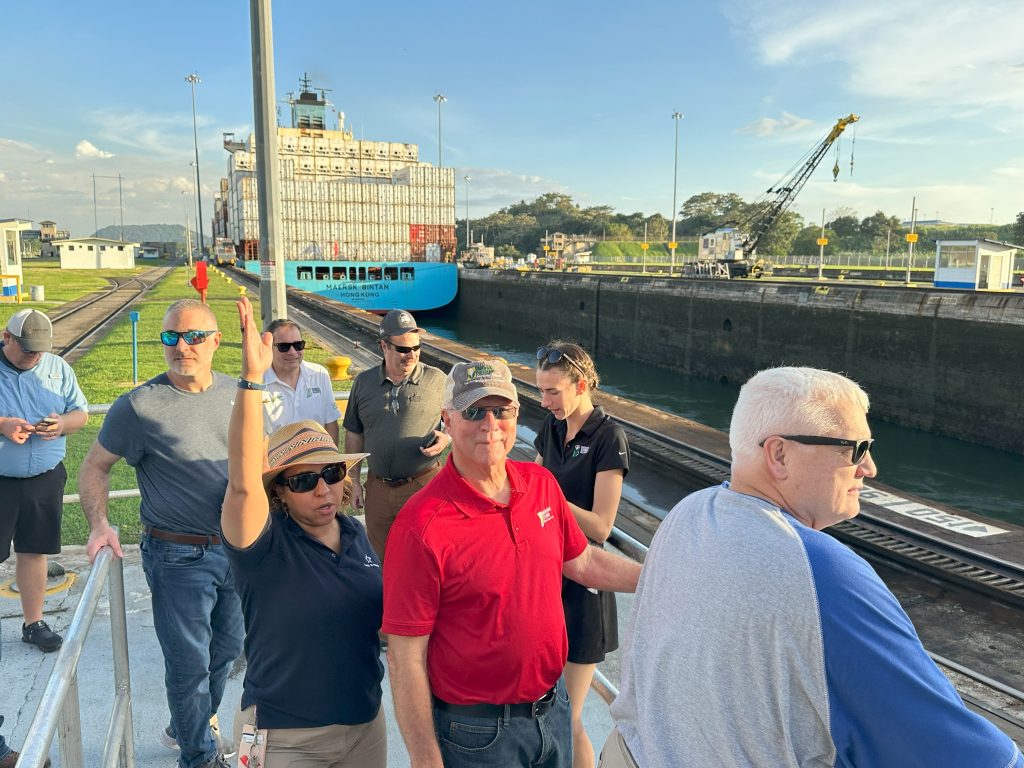
Steenhoek adds that it will remain critical to maintain a supply chain that can facilitate profitability for farmers.
Supporting soybean-related projects in the region through USSEC
Farmer leaders also heard from representatives with the U.S. Soybean Export Council (USSEC). Leonardo Chapula discussed several projects in the Latin American region. One of the projects, Soybean Oil Masters, aims to promote the use of soybean oil through educational sessions, events, trade missions, and certification testing.
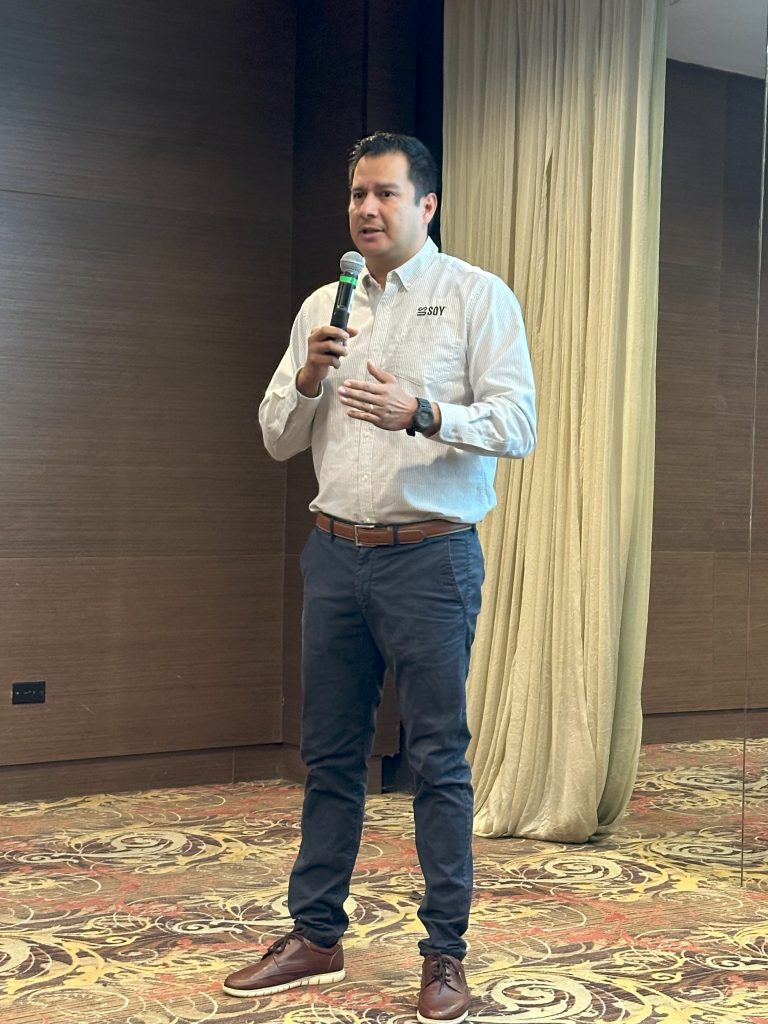
“It’s a 360° program where participants get to see the whole value chain of soybean oil. Thanks to the investment from Indiana Soybean Alliance, this program started two years ago here in the Americas region in Colombia. We’ve been expanding every year. Last year we had participants from Guatemala and Mexico and this year we’re having people from Costa Rica and Jamaica,” he said.
Chapula says it’s important for farmers from Indiana to know where their investments are going and how important their participation in USSEC’s programs in the Latin American region is.
“We understand that the market is always evolving and having the support of associations such as the Indiana Soybean Alliance, is key to have our programs keep going in this region and make sure that US soy is top of mind for the customers here in the region,” he said.
The farmers also heard from Jairo Amézquita, USSEC Americas aquaculture regional manager, about opportunities for U.S. soybeans in aquaculture.
Corn ethanol opportunities in Panama
A representative with U.S. Grains Council provided an update about Indiana-funded programs in Latin America.
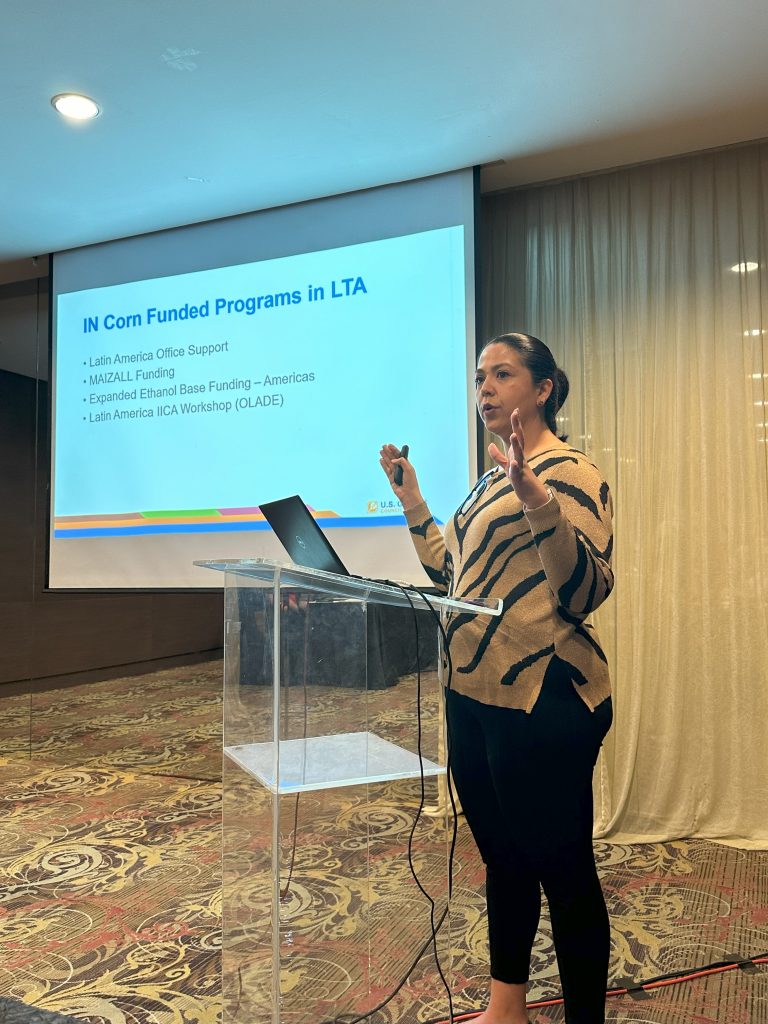
ICMC supports U.S. Grains Council’s efforts in promoting the use of ethanol and its technical, economic, and environmental benefits through training workshops in Latin America. U.S. Grains Council, which works to develop corn and ethanol export markets in more than 50 countries, signed an agreement earlier this year to help grow the ethanol market in Panama. Educational programs have been developed under the agreement to help train new government officials, industry representatives, and refinery employees.
ICMC also supports USGC in finding international buyers for ethanol and improving the value of Indiana’s corn crop. Corn farmers benefit from a growing ethanol market as corn is the primary feedstock in U.S. ethanol.
ISA Biofuels Director Helena Jette says it is a positive step and education will help promote the use of ethanol.
“We’re lucky we live in a country that has fuel with 10 percent ethanol widely available,” she says. “Some countries have zero and that’s why our organization supports programs like this in other countries.”
Tim Gauck, president of ICMC, says it provides opportunities for Indiana corn farmers.
“We heard about an ethanol blending opportunity that will encourage gasoline to contain at least five percent ethanol. That will be a market for some of our ethanol in Panama,” he said. “Educational programs will help increase awareness on the benefits of ethanol.”
Gauck says it was beneficial to hear about several projects in Central America that benefit corn farmers including education about cuts of U.S. meat, the quality of U.S. grain, and more.
Other opportunities in Panama
Pete Olson, the Attache with the Foreign Agricultural Service at the U.S. Embassy of Panama spoke with the group. Olson says Panama is a $1 billion dollar market for U.S. food and agricultural products.
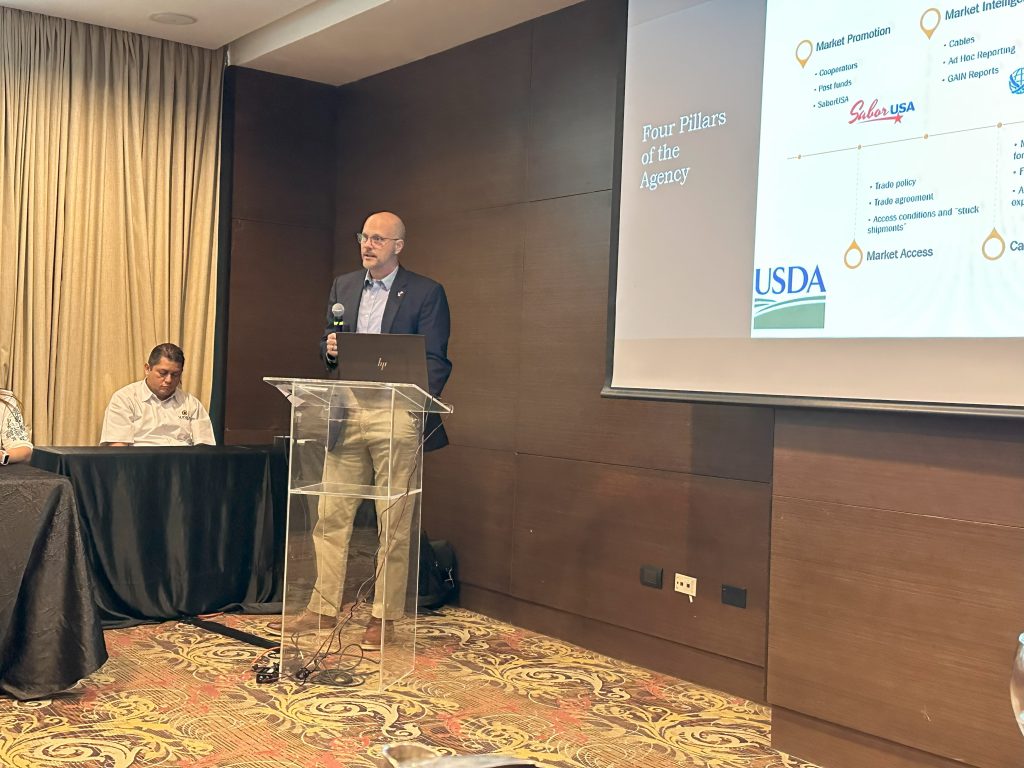
“It’s close to home, the regulations are fairly easy to deal with, and Panamanian agriculture and food processors need American ingredients and American inputs. They have a long history of very strong relationships with U.S. suppliers so it’s a great place to do business. I think it’s important for farmers to come down and see the results of that work,” he said.
He says there are a lot of opportunities for American farmers.
Posted: December 21, 2023
Category: ICMC, ISA, Market Development, News

